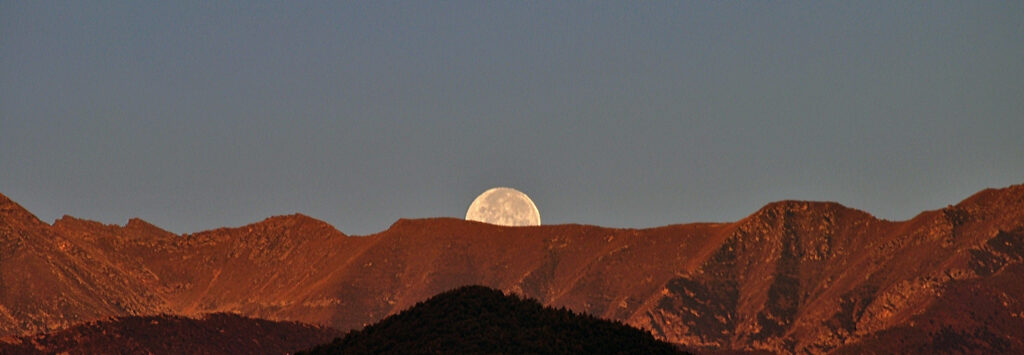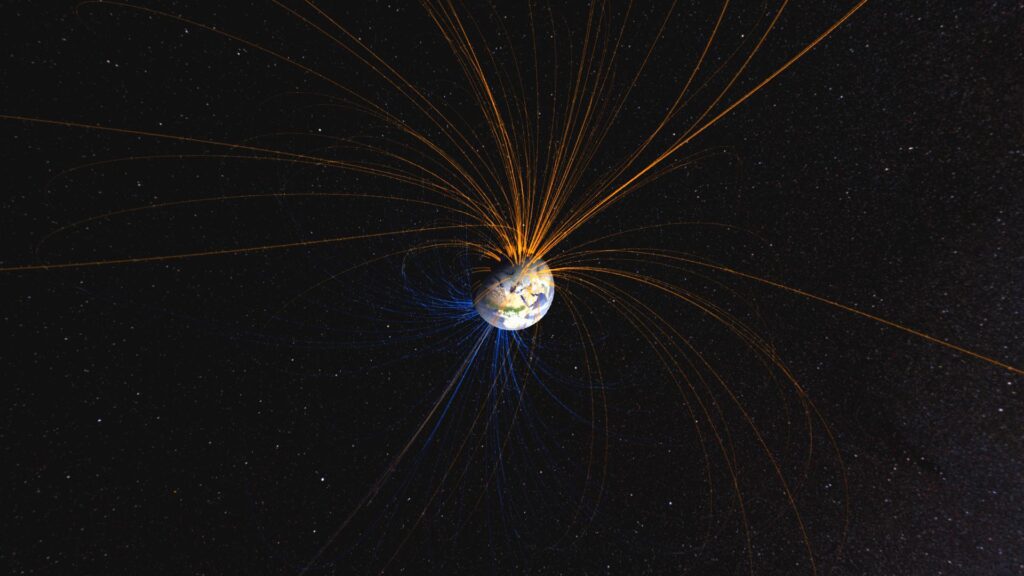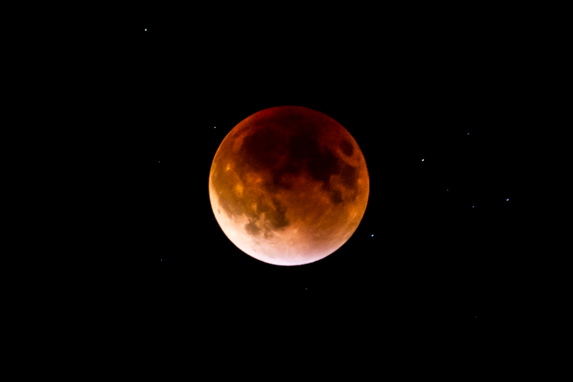Rust in the form of hematite has been found on the Moon, and new research suggests it could be caused by the Earth’s atmosphere.
By Jake Foster
For decades, our Moon was thought of as a dead world, a celestial ball of rock without any atmosphere or interesting chemical activity. But there is much more to the Moon than meets the eye, and it now appears that the Moon is rusting.
A new study from the University of Hawaiʻi at Mānoa has found rust at high latitudes on the Moon. The presence of the oxidized mineral known as hematite on the lunar surface may be caused by the oxygen in our atmosphere. Researchers believe that solar winds have been stripping oxygen from Earth’s upper atmosphere and blowing it all the way to the Moon (a distance of approximately 384,400 kilometers), where the rusting process then occurs.


How does rust form?
When iron (Fe) comes into contact with oxygen (O), it undergoes a process called oxidation. This leads to the formation of iron oxide, better known as rust (Fe2O3). Rust is common on Earth because of our abundance of both iron and oxygen, but we also see it throughout the solar system.
The most famous example of extra-terrestrial rust is seen on Mars. Martian soil is rich with iron oxide, which is what gives Mars its distinctive red-orange color. The red planet is literally covered in rust.
The rust found on the Moon’s polar regions is in the form of hematite, a common form of iron oxide. This discovery was unexpected because the Moon has no atmosphere of its own and is virtually devoid of oxygen. Any iron on the lunar surface would be expected to remain pristine and untouched. So where is the oxygen coming from to cause the rust? Research indicates that solar winds and the Earth might be the culprits.
RELATED: SPACECRAFT COULD CLEAN UP TRASH ORBITING EARTH
The impact of solar winds on the Moon
Solar winds produced by the Sun often scoop up parts of our upper atmosphere and carry it off into space. As this new research has found, these solar winds can carry particulates all the way to the Moon. Shuai Li, the lead author of the study, says the team thinks the hematite on the Moon is formed when iron on the lunar surface comes into contact with oxygen from Earth whenever the Moon is in Earth’s magnetotail.


The Earth’s magnetic field repels solar winds and protects our atmosphere. A magnetotail is the part of a planet’s magnetic field that extends out into space. Any particles that are picked up by solar winds are deflected along this path, and once a month the Moon orbits through the path of Earth’s magnetotail. At that time the Moon can be struck by the oxygen carried by the solar winds.
Most of the hematite found on the Moon is located at the poles, in areas where water ice might be found. Hematite was also more often found on the nearside of the Moon, the one that faces the Earth. “More hematite on the lunar nearside suggested that it may be related to Earth,” notes Li.
“This reminded me of a discovery by the Japanese Kaguya mission that oxygen from the Earth’s upper atmosphere can be blown to the lunar surface by solar wind when the Moon is in the Earth’s magnetotail. So, Earth’s atmospheric oxygen could be the major oxidant to produce hematite. Water and interplanetary dust impact may also have played critical roles.”
The importance of the findings
This research doesn’t just teach us more about our lunar satellite; it also suggests there is a greater interaction between Earth and the Moon than we previously thought. We have known for a long time that the gravitational force of the Moon is responsible for the tides on Earth, but we now know that Earth’s atmosphere may affect the lunar soil in a very real way.
Commenting on the study’s importance, Li notes: “This discovery will reshape our knowledge about the Moon’s polar regions. Earth may have played an important role on the evolution of the Moon’s surface.”
This study was published in the journal Science Advances.
Reference
Li, S., Lucey, P. G., Fraeman, A. A., Poppe, A. R., Sun, V. Z., Hurley, D. M., & Schultz, P. H. (2020). Widespread hematite at high latitudes of the Moon. Science Advances, 6(36). http://dx.doi.org/10.1126/sciadv.aba1940


About the Author
Jake Foster is a science writer with an MSc in Science Communication and a BSc in Physics with Astronomy. He is also an Explainer at the Science Museum in London. Connect with him via Twitter @Jake_Foster1.
Featured photo of a blood moon by Max Goldberg.

